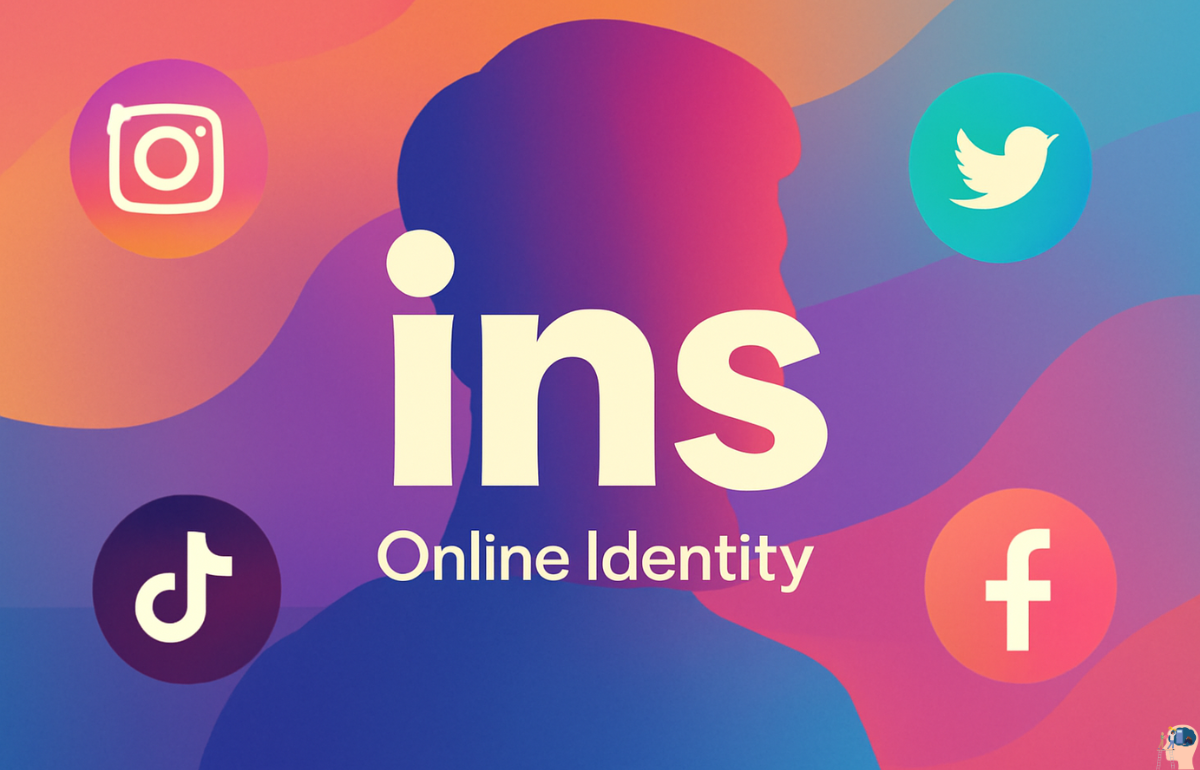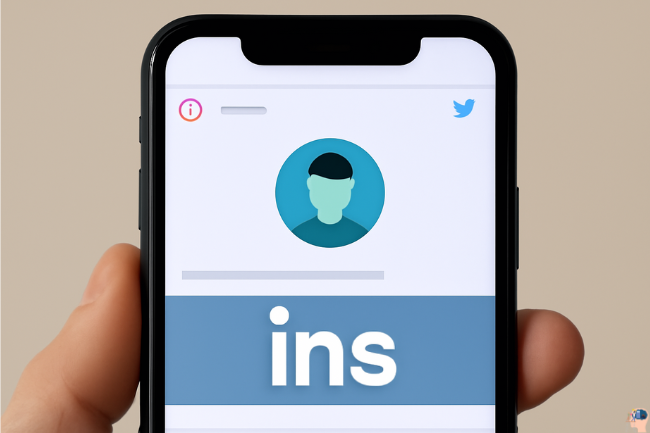In the rapidly evolving digital landscape, new ways of expressing individuality and connecting with others continue to emerge. One such symbol gaining significant attention is “i̇ns.” A short yet powerful term, “i̇ns” is more than just a word—it encapsulates personal identity, authenticity, and individuality in a world where digital interaction is at the forefront of communication. This article explores the origins, significance, and cultural implications of “i̇ns,” particularly on social media, and examines how it has become a shorthand for self-expression in the digital age.
What Is “ins” and How Did It Emerge?
The term “i̇ns” has become a defining feature of modern digital communication, especially within online communities. It serves as a symbolic representation of individuality and personal identity, frequently used across social media platforms such as Instagram, Twitter, and TikTok.
While “i̇ns” may seem like a simple abbreviation or hashtag, it holds much deeper significance. The origins of this term can be traced back to various digital subcultures that prioritize personal branding and self-expression. It is believed to have evolved organically, first gaining traction in niche online communities and later spreading into mainstream social media.
“İns” is shorthand for representing a person’s essence, often used as part of captions, bios, or posts to quickly express identity. It reflects the user’s personality, values, and the way they wish to be perceived in the digital space. But why did this simple term gain such widespread appeal? Let’s explore further.
The Role of “ins” in Social Media Communication
A Symbol of Individuality
On social media, personal branding and self-expression are paramount. People seek to present themselves authentically, and “i̇ns” serves as an ideal tool for this purpose. By incorporating “i̇ns” into posts, users communicate a sense of identity that aligns with their online persona. The term acts as a badge of authenticity, instantly communicating who they are in a world where online presence is often curated.
For example, on platforms like Instagram, where images dominate, a single word like “i̇ns” can have a significant impact. It’s a simple yet effective way to showcase one’s individuality without needing to elaborate in lengthy text. Whether in a bio, hashtag, or comment, the term represents more than just a label; it signals a unique perspective, lifestyle, or belief system.
Quick Communication for a Digital-First Generation
In today’s digital age, brevity is essential. The rise of “i̇ns” correlates with the increasing preference for quick, digestible communication, especially among younger generations like Millennials and Gen Z. Social media users now favor minimalist forms of expression, and “i̇ns” perfectly fits this demand.
Younger audiences, who are highly active on platforms like TikTok and Instagram, are adept at using symbols and shorthand to communicate quickly. They rely on concise expressions to convey emotions, trends, and even personal philosophies, making “i̇ns” an ideal tool for efficient self-representation.
The short nature of the term also makes it highly versatile. Users can add “i̇ns” to a variety of posts—whether a caption under a selfie, a tweet, or a personal reflection—allowing them to stay relevant and connected with their digital audience.
Cultural Implications of “ins”
Connecting Across Borders
A compelling feature of “i̇ns” is its capacity to break through both cultural and geographic barriers. The digital world has allowed for unprecedented levels of global interaction, and “i̇ns” has become a universal symbol of self-expression, uniting people from diverse backgrounds.
This linguistic flexibility has fostered a sense of community among users worldwide. Whether you’re in New York or Tokyo, you can see “i̇ns” used in similar contexts—across Instagram posts, tweets, or TikTok videos—creating a shared language of individuality. As digital cultures converge, the term gains meaning beyond specific regions, evolving into a globally recognized symbol.
Embracing Digital Humanity
The rise of “i̇ns” is not only about technology but also about the evolving concept of “digital humanity.” This refers to the ability of individuals to maintain genuine human connections in a technology-driven world. Despite the tech-centric nature of online platforms, people are still searching for authenticity and human connection.
In this context, “i̇ns” plays an essential role in maintaining personal identity in the virtual realm. As people curate their online personas to reflect their true selves, the use of “i̇ns” fosters inclusivity and shared experiences. It acts as a visual shorthand for belonging, helping users feel connected to like-minded individuals who share similar values or interests.
How “ins” Shapes Digital Identities
A Badge of Authenticity
As more individuals seek authenticity online, “i̇ns” has emerged as a crucial element of digital identity. For many, social media platforms are not just spaces to share photos or updates—they are places to curate and craft a carefully constructed online self.
By using “i̇ns,” users create a visible, recognizable mark of authenticity that reflects who they are in real life. This not only allows them to express their personality but also aligns their digital identity with their offline self, fostering a sense of cohesion between the two.
For influencers and content creators, this badge of authenticity is especially significant. The more authentic a brand feels, the stronger the connection with the audience. Therefore, using symbols like “i̇ns” has become an essential part of personal and brand identity management.
Embracing Flexibility and Personal Interpretation
One of the most fascinating aspects of “i̇ns” is its adaptability. As users encounter this term, they often assign their own personal interpretations. Some may view it as a reflection of their values, while others might use it to represent their interests, passions, or affiliations.
This flexibility is what makes “i̇ns” particularly powerful in digital communication. It allows individuals to tailor its meaning to their specific needs, whether they want to express a social cause, their creative endeavors, or simply their personality. This openness to interpretation fosters greater engagement, as people are invited to make the term their own.
The Future of “ins”: Will It Continue to Grow?
As the digital world evolves, so too will the significance of “i̇ns.” Its rise shows no signs of slowing down, and its popularity among younger generations suggests it will continue to be a key symbol of online self-expression for years to come.
Social media platforms will undoubtedly adapt to these changes, encouraging the continued use of symbols like “i̇ns” as part of their digital communication strategies. For influencers and brands looking to engage with their audience, staying ahead of trends like these is crucial for maintaining relevance.
Table: The Significance of “ins” in Digital Identity
| Platform | Usage | Audience | Key Takeaway |
|---|---|---|---|
| As part of captions, bios, and hashtags | Millennials, Gen Z | A symbol of individuality and authenticity | |
| Used in tweets and hashtags to express personality | Diverse users | Quick and relatable communication | |
| TikTok | Displayed in video descriptions or comments | Gen Z, young adults | Enhances engagement and fosters community |
| Often seen in personal updates and posts | All generations | A visual shorthand for self-representation |
FAQs about “ins”
1. What does “i̇ns” mean?
“İns” is a shorthand term representing personal identity and individuality, commonly used across social media platforms to express authenticity and uniqueness.
2. Why is “i̇ns” so popular?
Its simplicity, flexibility, and relevance to digital self-expression make it an appealing way to quickly convey identity, especially among younger audiences.
3. How do people use “i̇ns” on social media?
It is commonly used in captions, hashtags, and bios to enhance online identity, foster connection, and express personal values or interests.
4. Can “i̇ns” be interpreted differently by different people?
Yes, “i̇ns” allows for personal interpretation, meaning users can adapt its meaning to reflect their unique identities, making it a versatile symbol.
5. Will “i̇ns” continue to grow in usage?
Given its popularity among younger generations and its role in fostering digital authenticity, it is likely that “i̇ns” will continue to be a prominent part of digital communication.
Conclusion: The Power of “ins” in the Digital Era
The rise of “i̇ns” underscores the growing importance of personal identity in the digital age. Whether you are an individual looking to express your unique voice or a brand seeking deeper engagement with your audience, understanding the cultural significance of “i̇ns” can help you navigate and thrive in the evolving digital landscape. As online communication continues to evolve, staying attuned to such trends can enhance how you present yourself and connect with others. Embrace this symbol as part of your own digital identity journey, and watch as it continues to shape the online world in exciting ways.
Learn aboiut Eo PIS

I’m Salman Khayam, the founder and editor at Wellbeing Junctions. With a passion for thoughtful writing and research-based content, I share ideas and insights that inspire curiosity, growth, and a positive outlook on life. Each piece is crafted to inform, uplift, and earn the trust of readers through honesty and quality.




